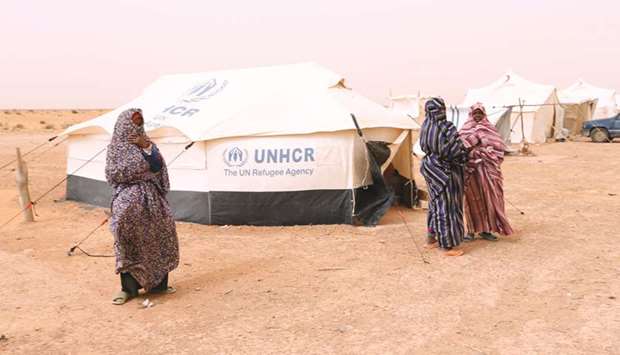But hundreds of people who were stranded while trying to return to a town emptied in an act of collective punishment during Libya’s 2011 revolution have sworn to stay put here until they are allowed home.
The makeshift camp of 250 tents sprang up in early February after armed groups from the city of Misrata blocked convoys of displaced families trying to approach Tawergha, a town of about 40,000 that still lies in ruins.
In doing so, they thwarted — at least temporarily — a landmark reconciliation effort to resolve a case that has symbolized the political and communal divisions which surfaced during and after Libya’s uprising.
It was forces from Misrata that chased Tawergha’s residents from their homes more than six years ago, accusing them of supporting a military siege of their city by Muammar Gaddafi, part of his failed attempt to crush the Nato-backed revolt that overthrew him.
Tawergha’s residents, many of them the dark-skinned descendants of sub-Saharan African slaves, have since been scattered in squalid camps across Libya.
After long negotiations, they were told by the internationally recognised government in Tripoli that they could start moving back on February 1.
Officials had even ordered 3,000 meals and a stage for a ceremony in Tawergha, said Mustafa Ghrema, a town council member living at Garart Al-Gtef.
Diggers had started clearing some of the land.
But repeated attempts to approach Tawergha and set up camp there were blocked by a combination of uniformed forces and militiamen in civilian clothes, some of whom opened fire, Ghrema said.
“The militiamen who shot at us were not the same as the first group, who appeared to be organised military forces.
They talked to us with respect and told us it was a problem and we could be exposed to danger,” he said.
“The militias used racist words, abuse and repugnant terms, and fired on us.”
Nearly 200 families settled on the roadside at Garart Al-Gatef, about 27km from Tawergha.
A smaller number trying to return from Benghazi were blocked east of Tawergha.
Local and international aid agencies are now delivering food, water and medical assistance at Garart Al-Gatef.
A nursery has been up in one large tent, and some young children are being bussed to a local school.
But conditions are harsh.”You can see the wind for yourselves. It’s difficult to describe what the dust does to your eyes,” said Ghazala Awad, 41, as she stood allocating tents to families at the camp.”Sometimes we can’t even hear, and it doesn’t make a difference if you put a scarf on.”
Tawergha, about 200 km south-east of Tripoli, is an eerie collection of bombed-out, abandoned buildings that have been left all but untouched.
The UN concluded that the town was deliberately destroyed in 2011 in order to make it uninhabitable, and said Misrata’s militias had committed crimes against humanity.
For the past few weeks, the Tripoli government and the United Nations have both been pushing to resolve the standoff.
The camp’s residents say they will only go in one direction.
“These camps are temporary, not permanent,” said Salem Ibrahim, 61, a retired teacher who arrived at Garart Al-Gatef in a convoy from Tripoli.
“We will not relinquish our land and our home and the soil we grew up on. We will stay here until we return.”

